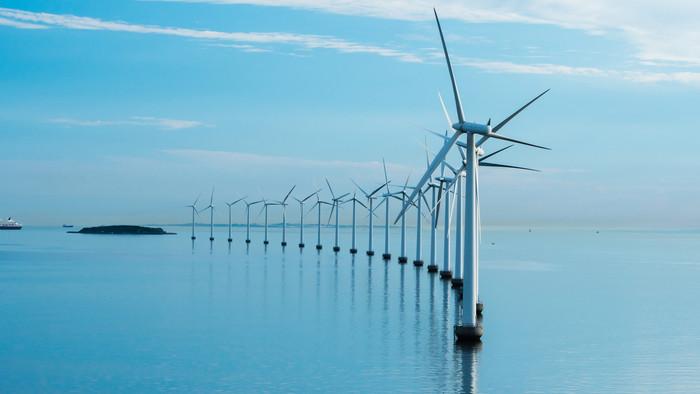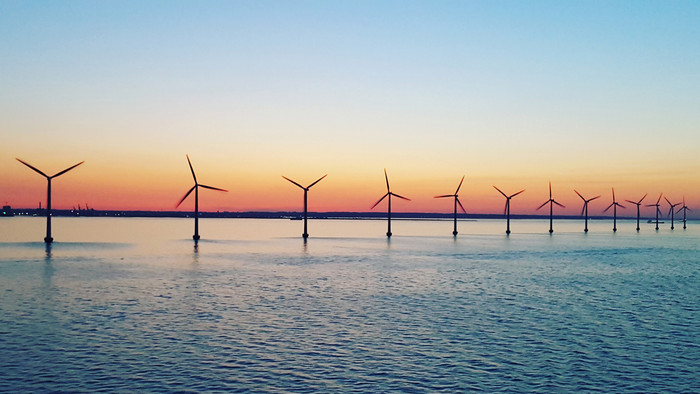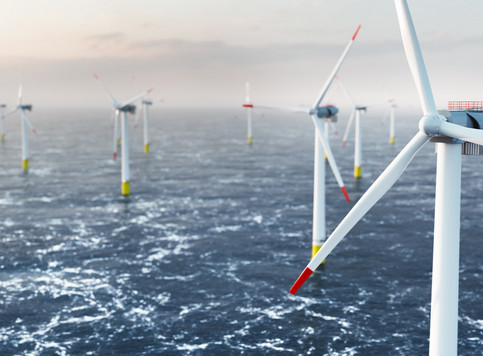Security when financing offshore wind projects in Norway
The Norwegian Ministry of Petroleum and Energy (MPE) recently confirmed and maintained Q1 2023 (within 31 March) as deadline to announce the start of the offshore wind process, including issuance of licenses in the North Sea. The allocation of areas is anticipated to to take place within Q3/Q4 2023. The license areas Utsira Nord (UN) and Sørlige Nordsjø II (SNII) contemplate utilising floating and fixed bottom offshore turbines respectively. The ”green light” for the first licencing process within Norwegian offshore wind industry is just around the corner – but will the current legal framework attract commercial financiers?
Offshore wind projects on the Norwegian continental shelf will require very large investments. In order to avoid limiting offshore wind energy in Norway to only companies with large equity capital, which may be earned through other activities not considered as "green", some form of security interest over assets in an offshore wind project must be allowed.
To be willing to lend to developers, lenders need to know that they can establish a legally valid and enforceable security over assets related to the offshore wind projects. Under Norwegian law, a security interest may only be validly created over an asset under a specific legal basis pursuant to the Liens Act (Nw.: panteloven) or other Norwegian statutory legislation.
An offshore wind project involves several viable security assets and a lender will likely seek a composite security package. Firstly, it will be possible for a lender to establish security in the shares in the borrower/JV consortium or the borrower group, enabling the lender to obtain control over the private limited liability company, though the lender will not be protected from the JVs disposal of its assets in such case Further, lenders will seek market standard security interests, such as e.g. security interests over claims under bank accounts and insurances, charges over trade receivables, operating assets, inventory, step-in rights in direct agreement with third parties (off-taker agreements, turbine suppliers etc) and claims under such agreements, to the extent these securities are relevant. While it is possible to provide such security for offshore wind projects, the focus area of this article is the most valuable assets of the borrower; the project’s wind turbines and the right to produce offshore wind power.
As there currently are no existing special purpose liens regulations or acts covering all offshore wind assets, the legal basis for security in each asset must be identified individually. This may create uncertainty among lenders considering financing offshore wind projects, even if the project company seeking financing has technically sound solutions, is financially robust, and has the ability to carry out the project. Uncertainty among financiers may result in the project company being unable to raise the required funding for the project.
Some questions concerning the legal basis to take security over assets related to offshore wind projects are still unanswered, although these questions have been raised since the Ocean Energy Act (Nw.: havenergilova) came into force in 2010, which act would have been the natural basis to regulate the missing security legislation for both floating and fixed bottom offshore wind projects.

Offshore wind turbines
Norwegian legislation distinguishes between floating and fixed bottom wind turbines. A floating wind turbine may be registered in the Norwegian ordinary ship register (NOR) as an "other floating device" under section 33 subparagraph 1 no. 2 of the Maritime Act (Nw.: sjøloven), and may thus be mortgaged in accordance with section 3-3 of the Liens Act and the Maritime Act. Due to the fact that floating turbines may be registered in NOR, the provisions of section 3-4 of the Liens Act indicate that such floating turbines would be excluded from the entity's operating assets subject to charge. Consequently a charge over operating assets of the project company will not include the floating turbines. The research floating wind turbine “Unitech Zephyros” (previously owned by Equinor and called Hywind Demo) is an example of such NOR registration.
The provisions of section 33 subparagraph 1 no. 2 of the Maritime Act is technology neutral, which opens up to registration of various installations in addition to floating wind turbines. The prerequisite being that the installation is "floating" and is used for commercial purposes. However, a disadvantage when registering floating turbines in NOR is that turbines must be registered individually – this indicates more complicated issues when considering registration of securities related to larger offshore wind farms comprising several turbines.
As to fixed bottom turbines, could they also be considered as "other floating devices" pursuant to the Maritime Act? The answer is simply no, and therefore fixed bottom turbines may not be registered in NOR. Fixed bottom turbines do not constitute registerable movable property, and cannot be mortgaged pursuant to the provision of section 3-3 of the Liens Act. Due to this fact, fixed bottom turbines are not excluded from the entity's operating assets as a default. It is still unlikely that fixed bottom turbines are considered as operating assets pursuant to these provisions, as operating assets normally consist of movable property and not larger fixed installations such as fixed bottom turbines.
Which possibilities exist to establish security in fixed bottom offshore wind turbines in Norwegian waters? Fixed bottom turbines in principle resemble property or fixtures to property. In onshore wind projects, the wind turbines are covered by the lender's charge over the borrower's land rights. However, this is not possible for offshore wind turbines, as the seabed is not subject to private property rights, and hence it is not possible to mortgage fixed bottom turbines as property.
A theoretical solution could be that the seabed a turbine is fixed upon is established as a construction property pursuant to the Cadastre Act (Nw.: matrikkeloven).
To create a construction property on ownerless seabed, one must apply to the Norwegian Mapping Authority (Nw.: Statens Kartverk). In order to obtain land register permission for construction property on ownerless seabed, the entity seeking permission must provide a legally established permit for a permanent installation on ownerless seabed. For offshore wind projects, such a permit would be a license pursuant to the Ocean Energy Act.
The construction property could thus be mortgaged according to section 2-1 of the Liens Act, but it is highly uncertain how the Norwegian Mapping Authority will consider an application to register a fixed bottom wind turbine as construction property.
The distinction between floating and fixed bottom installations begs the question how these installations could be best utilised as the object of a security interest. So far, MPE has not publicly initiated any substantive discussions as to how offshore wind installations and licenses could be best utilised as security. However, MPE has announced its ongoing initial workstreams on a comprehensive financing proposal that is also expected to regulate collateral security for upcoming offshore wind projects.
A possible solution for MPE to consider is to treat floating and fixed bottom offshore wind turbines equally, including allowing both types to be registered in NOR. This solution could create a thorough and transparent system for security in offshore wind projects, that may appeal to lenders.
A permanently placed installation has less independent value as a credit object separate from the underlying license than a mobile installation due to the fact that the mobile installation may be moved and service multiple sites in its life. The fixed installation cannot easily be removed and relocated to other sites, accordingly a fixed bottom wind turbine has less independent market value in a normal sense. It is not as crucial for financing fixed bottom wind turbines that the fixed bottom turbine itself can be mortgaged, as long as security interest can be established in the license along with or separate from the fixed bottom turbines themselves.
Floating wind turbines are conceptually more designed for serial production and contemplate movement to other sites. Floating wind turbines consequently have a greater independent market value and are better suited as independent credit objects than fixed bottom wind turbines. However, not all floating wind turbines are created equally as some are easier to redeploy than others.

Licenses and concessions
The prerequisite for a comprehensive and well-functioning mortgage and liens system for fixed bottom wind turbines is that the license can be used to obtain financing for the project. This is also the case for floating wind turbines, but less so.
Per date there are no legal framework regulations related to establishment of security over licenses/concessions as an independent security asset, nor as an add-on to a security interest in the turbines. This is true for both production, construction and grid facility licenses. The issue has not been discussed in the preparatory works for the Ocean Energy Act. Financiers are left without any clear legal framework to take security in the license itself. Furthermore, any restrictions under law or contract on the right to transfer a license will equally restrict the access to take security over the license, unless otherwise expressly provided by law.
The white paper no. 36 (Meld. St. 36) considers whether it should be allowed to establish security in offshore wind turbines with a license under the Ocean Energy Act, and it appears that the Government is contemplating application of the legal framework used in the petroleum industry, under which licenses can be registered in a designated register, for offshore wind. An important question is therefore whether a blueprint of the liens regulation in the petroleum industry is an appropriate solution for financing offshore wind projects.
The Norwegian Petroleum Act (Nw.: petroleumsloven) allows the registration of licenses and installations in the Norwegian petroleum register (Nw.: Petroleumsregisteret) and thereby the ability to perfect a security interest in both licenses and installations. The access to mortgage or pledge security pursuant to the Petroleum Act is based on the fact that the licenses are the main assets and pledging of the licenses normally includes the related installations.
A further consideration for such a single integrated security in licenses and installations is that installations in the oil and gas industry are usually bespoke and made to operate at one particular field. This is similar in some ways to fixed bottom wind turbines but unlike floating wind turbines. However, the petroleum industry is subject to strict public control of the operation of such installations. The operation of offshore wind turbines will be less complicated and require public control to a less degree. Hence, a blueprint copy of the petroleum register may not be natural for offshore wind.
In the aquaculture industry, licenses and equipment are pledged separately. Floating wind turbines, not being limited to operation on a particular site on the continental shelf, are more comparable to equipment used in aquaculture than the petroleum industry. It may be appropriate to have a liens regime in offshore wind as in aquaculture. Moreover, the awarding regulation for the licenses will have a major impact on which liens regulation should apply to pledging the licenses pursuant to the Ocean Energy Act.
These considerations indicate that a common legal framework for security interests in licenses, and floating and fixed bottom wind turbines, may not be the best suited solution for offshore wind.
Urgent need for legal security framework
The current applicable liens regulations are generally not suitable for or adapted to offshore wind, and security interests in offshore wind projects’ assets are thus currently based on an uncertain legal basis. Consequently, the liens regulation could impede the activities of project companies hoping to utilise secured debt financing.
MPE has indicated possible amendments to the Ocean Energy Act to address offshore wind financing. We encourage MPE to prioritise preparation and completion of the legal framework needed to finance offshore wind projects, including a clear security regime adapted to the differentiation in needs for of the floating and bottom fixed offshore wind categories. A sensible and practical legal framework should have been readily available when the license areas UN and SNII were publicly announced, at least within shortly thereafter. We encourage MPE to take into consideration the issues raised above and deliver a “bankable” solution that financiers can rely on for future funding of offshore wind in Norway, a crucial new industry with high expectations for our country, that should not meet any obstacles in lack of necessary regulatory framework.




